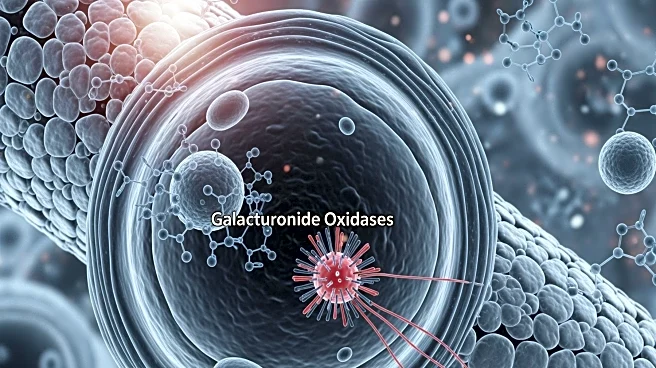What's Happening?
Recent research has uncovered a novel strategy used by oomycetes, a group of plant pathogens, to manipulate plant innate immunity. The study reveals that these pathogens secrete FAD-dependent AA7 oxidases
during infection, which oxidize oligogalacturonides (OGs), key plant damage signals, to neutralize their elicitor activity. This allows the pathogens to evade host defenses and promote infection. The discovery adds a new layer of complexity to the understanding of host-pathogen interactions and expands the known functions of the AA7 enzyme family.
Why It's Important?
This finding is significant for agricultural industries and plant science, as it provides insights into how pathogens overcome plant defenses. Understanding these mechanisms can lead to the development of new strategies for crop protection and disease management. The ability of oomycetes to manipulate plant immunity poses a challenge for maintaining crop yields and food security, highlighting the need for continued research and innovation in plant pathology.
What's Next?
Future research may focus on developing inhibitors that target the AA7 oxidases, potentially leading to new plant protection products. Additionally, breeding programs could aim to enhance plant resistance by incorporating genetic traits that counteract the effects of these enzymes. Collaboration between researchers and agricultural stakeholders will be crucial in translating these findings into practical applications.
Beyond the Headlines
The study underscores the evolutionary arms race between plants and pathogens, where each adapts to the other's defenses and countermeasures. This dynamic interaction drives biodiversity and ecosystem resilience but also presents challenges for agriculture, where monocultures are particularly vulnerable to pathogen attacks.











